The Essence of Premium Crankshaft Components
Premium crankshaft components are vital to the internal combustion engine's efficacy, dependability, and lifespan. These parts adeptly transform the pistons' linear motion into rotational torque, propelling the transmission and wheels. Constructed from durable materials to endure extreme stress and temperature, premium crankshaft components are pivotal for seamless and efficient engine operation.
Entities such as machinery repair shops, construction firms, and carmakers must secure a trustworthy supply of crankshaft parts. These businesses typically demand top-tier components to preserve their engines' functional integrity. Whether for regular upkeep or urgent fixes, these parts must conform to exacting standards to guarantee optimal engine performance.
The crankshaft operates on a straightforward concept: it converts the vertical piston movements, transmitted via connecting rods, into a rotational force on the engine block's main bearings. This conversion of reciprocating to rotational motion is the driving force behind the vehicle or machinery.
Varieties of Premium Crankshaft Components
The market offers a spectrum of premium crankshaft components, each designed to fulfill distinct operational needs:
-
Forged Steel Crankshafts: These are forged under intense pressure at high temperatures. Known for their exceptional strength and endurance, forged steel crankshafts are suited for high-performance uses, such as motorsport or rigorous industrial tasks.
-
Cast Iron Crankshafts: More economical to produce than their forged counterparts, cast iron crankshafts provide commendable fatigue resistance, though they may not match the strength of forged steel. They are frequently employed in stationary engines, diesel motors, and certain automotive contexts.
-
Aluminum Alloy Crankshafts: Favored for their lightness and corrosion resistance, aluminum alloy crankshafts are chosen in scenarios where weight minimization is crucial, especially in the automotive sector.
-
Carbon Fiber Reinforced Crankshafts: These crankshafts are exceedingly light and rigid, representing a top-tier option for high-performance and specialized uses, such as Formula 1 racing.
Each type boasts characteristics that render it suitable for specific applications. For instance, the robustness of forged steel is ideal for heavy-duty tasks, while aluminum alloy or carbon fiber crankshafts are preferable for applications demanding lightness or resilience to high stress.
Selecting Premium Crankshaft Components
Choosing the right premium crankshaft components requires careful consideration. Begin by identifying the engine type—be it for small-scale devices like generators or larger apparatuses such as construction machinery or ships.
The choice of material is pivotal; the component's durability and performance hinge on it. Cast iron, for example, is prized for its robustness and thermal absorption, making it apt for taxing environments. Steel is another formidable option, recognized for its tenacity under heavy loads. Aluminum alloys, while lighter and more fuel-efficient, may necessitate distinct manufacturing methods to ensure structural integrity.
The intended use also dictates the selection of components. Repair shops or construction sites might opt for high-strength materials, whereas retailers for everyday or less intensive uses, like agricultural machinery, might consider a broader range of materials, including plastics or rubber.
Compatibility with existing engines or machinery is also crucial. Ensure the components adhere to industry norms and fit specific car models or machinery without the need for alterations.
Finally, evaluate the credibility of suppliers when procuring these parts. Opt for suppliers who offer machinery test reports to affirm quality standards. The availability of local service centers can be significant for post-purchase support.
Discovering Premium Crankshaft Components on Alibaba.com
Alibaba.com distinguishes itself as a global marketplace where businesses can source a comprehensive array of premium crankshaft components for diverse industries, including automotive, construction, and manufacturing. The platform's extensive network connects purchasers with seasoned suppliers worldwide, providing parts that meet various applications and requirements.
Alibaba.com's intuitive interface and sophisticated search functions make locating the precise crankshaft component effortless. Suppliers' detailed product information and available machinery test reports ensure that buyers are well-informed, enabling decisions that align with their industry-specific needs.
Alibaba.com's commitment to secure trading, exemplified by services like Trade Assurance, reassures buyers of protected interests throughout the transaction process until delivery is concluded. This dedication to a trustworthy trading ecosystem positions Alibaba.com as an exemplary resource for businesses in search of quality crankshaft components, enhanced by features that cater to mobile purchasing and multilingual communication.
Frequently Asked Questions on Premium Crankshaft Components
What constitutes the primary elements of a crankshaft?
The primary elements of a crankshaft encompass the main journal, connecting rods, pistons, and counterweights, all meticulously engineered and assembled to resist high stress and facilitate smooth engine operation.
How can I ascertain the appropriate material for my crankshaft components?
The optimal material for your crankshaft components is contingent upon the engine type and intended use. Common materials include cast iron, steel, aluminum, and alloy steel, each offering distinct advantages in strength, weight, and endurance.
What is the role of the crankshaft's main journal within an engine?
The main journal is crucial as it links to the camshaft, transforming the pistons' linear motion into rotational motion that propels the vehicle's wheels.
Is it possible to tailor crankshaft components for specific engine models?
Many suppliers provide customization services for crankshaft components to precisely fit specific engine models. Accurate engine details and modification requirements are essential to ensure compatibility.
Why are connecting rods essential in a crankshaft assembly?
Connecting rods are indispensable in a crankshaft assembly as they join the pistons to the crankshaft, converting the pistons' vertical motion into circular motion.
Why is piston to valve clearance critical, and how does it influence engine performance?
Piston to valve clearance is vital to prevent the valves from colliding with the pistons within the combustion chamber. Adequate clearance is key to optimal engine efficiency and durability.
How does the number of cylinders affect the choice of crankshaft components?
The number of cylinders in an engine influences the crankshaft components' functionality. It is imperative to select a crankshaft designed to accommodate the specific cylinder count of your engine configuration.
What does 'balance' signify in the context of crankshaft components?
'Balance' in crankshaft components pertains to the process of optimizing the crankshaft's weight distribution, which is essential for the engine's smooth operation and longevity.
Why is the 'compression ratio' significant when selecting crankshaft components?
The compression ratio is indicative of an engine's ability to compress air and fuel efficiently. Components that support a suitable compression ratio contribute to enhanced engine performance.
Are there special considerations for crankshaft components in high-performance applications?
In high-performance contexts, it is crucial to choose components that can endure greater stresses and deliver superior performance. Materials like forged steel or alloy steel are often preferred for their robustness and longevity.
What do 'interference' and 'non-interference' mean in crankshaft selection?
'Interference' denotes a scenario where a piston makes contact with a valve while the latter remains open, potentially causing damage if timing is imprecise. 'Non-interference' indicates that there is no contact between the piston and valve, minimizing the risk of damage.
Why is 'model range' an important factor in selecting crankshaft components?
'Model range' is crucial as it determines the component's compatibility with specific engine models. Selecting a component that matches your engine's specifications is essential for proper fit and functionality.
How does Alibaba.com ensure the caliber of crankshaft suppliers on its platform?
While Alibaba.com cannot vouch for the quality of its suppliers, it provides services like Trade Assurance to bolster transaction security and encourage adherence to quality benchmarks.




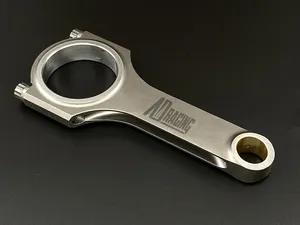



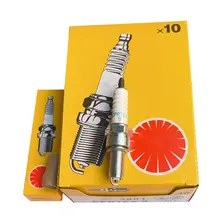



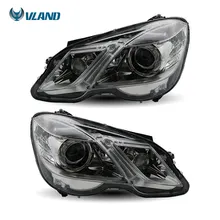



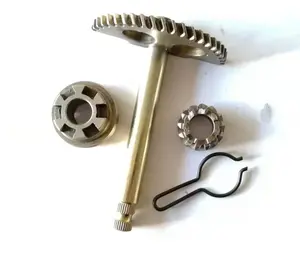
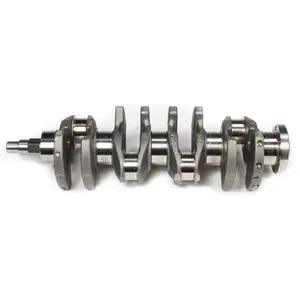

























 浙公网安备 33010002000092号
浙公网安备 33010002000092号 浙B2-20120091-4
浙B2-20120091-4